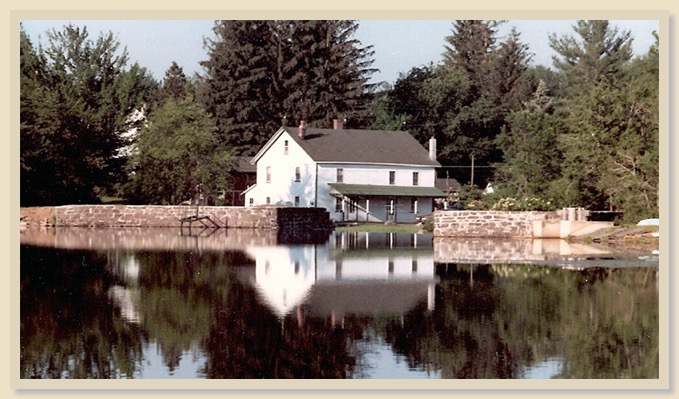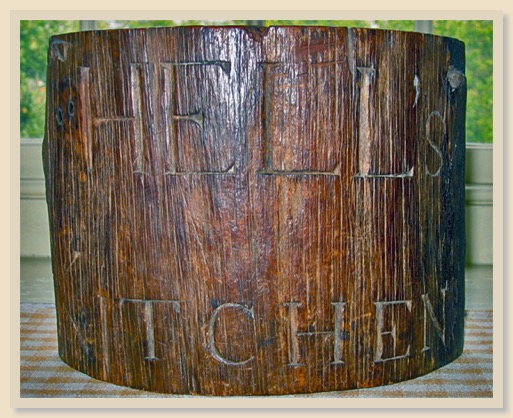
By Rick Bodenschatz
January 2016
Gen. George Washington saw this action as an attempt by the British to gain control of the Susquehanna River through to Baltimore to effectively split the colonies in half. The British had minimal troops for their strategy, so an alliance was formed with the Iroquois Nation that would provide the invasion forces necessary. Gen. Washington ordered Gen. John Sullivan to march an army from Easton, Pa., to upstate New York, to drive the Iroquois Nation into the Ohio Valley frontier.
Only a footpath existed over the Pocono Mountains, so a road from Tannersville to the Wyoming Valley had to be built through the wilderness in May 1779. Once completed, on June 18 Sullivan marched his expedition of 3,800 troops over the Poconos, with all military equipment and provisions. He succeeded with his objective by October, driving the Iroquois from upstate New York while destroying their villages and farms. [For more information, see Sullivan’s Expedition.]
The first road over the Pocono Plateau, known as Sullivan’s Trail, opened the area and Wilkes-Barre to the Lehigh Valley, Philadelphia and New Jersey. Observing the new road through the wilderness, Rev. William Rogers, D.D., wrote in his military journal on June 21, 1779, “The new road does its projectors great credit, and must in a future day be of essential service to the inhabitants of Wyoming and Easton.”
By 1800, the first permanent European settlers were calling Tobyhanna Township their home.
Sullivan’s Expedition produced Sullivan Trail, which extensively ran through Tobyhanna Township including today’s Pocono Pines. Although the Wilkes-Barre and Easton Turnpike opened to the west (Blakeslee) in 1816, Sullivan Road continued to be a significant route to the Wyoming Valley and upstate New York. This was especially true for travelers and commerce from and to eastern Monroe County and eastern Lehigh Valley and New Jersey. Those traveling by horseback, wagon and stagecoach required meals and lodging along the way.
The Stagecoach Inn of Tompkinsville
As one of the earlier settlers, Frederick P. Miller (1805-1880) moved to Tobyhanna Township from Jackson Township, buying considerable wooded acreage. His first record of taxable land ownership in Tobyhanna Township was 1846 when he owned his first 450 acres and half of a sawmill.
Each subsequent year he purchased more acreage, holding 633 acres in 1846 and 868 acres in 1848. He was listed as a lumberman in the tax records. By 1849 the tax records show he owned 1200 acres. His occupation was listed as a farmer by 1852, apparently as a result of clearing the timber from his land. A need was met in the 1850s when Frederick became an innkeeper, operating a stagecoach inn, or hotel, located on Sullivan Road in Tompkinsville (Pocono Pines), on a lot adjacent to today’s corner lot of Firehouse Road and Route 423.

From “History of Wayne, Pike and Monroe Counties, Pennsylvania” by Alfred Mathews, 1886, R.T. Peck & Company:

The Innkeepers
Frederick Miller married Catherine Long (b. 1806), and together they had 10 children.By 1854, son Timothy at age 26 (1828-1892) was listed in the tax records as owner of the inn, with his occupation being Innkeeper. The next year he married Catherine Bonser (1832-1903). He also owned 170 acres of land at that time.
His brother Emmanuel (b.1838) was killed in action in fierce fighting at the battle of Antietam during the Civil War in 1862.
[William Henry Christman, the first soldier to be buried at Arlington National Cemetery, was a friend of Emmanuel while working for Timothy on a farm Timothy later owned in the 1860s.]
As a stagecoach inn, the Miller establishment served as a hotel for overnight guests traveling in both directions, served meals and provided other comforts, in addition to its libations served from the bar. It also was a source of services for local residents.
We do not know of the name or names of the inn, or if it was continuously in ownership of the Miller family until it was dismantled in the year 2000. But it is safe to say that based upon historical record, without doing an exacting deed search, that the property was in the Miller family ownership for a great deal of its years until 2000.
Interviews of Walter Miller and his cousin, Thomas Miller, provide a number of details of their residence and ownership of the Inn. Following are detailed notes from those oral histories that are stored in HATT’s archives.
Memories of Walter Miller, grandson of Timothy.
b. January 29, 1893, Naomi Pines, Pa. (Pocono Pines)Following are notes made from an oral history interview with Walter Miller conducted on December 25, 1995 at age 103 years, by his daughter Barbara Miller Anton, (b. circa 1926). A cassette tape recording [now in the HATT archives] was made, where Walter states the following:
- He was born in the house known as the Stagecoach Tavern during a big snowstorm.
- He was told that his father and grandmother and grandfather were in attendance.
- He described the inn as having a bar room, a parlor, a dining room, a kitchen and five to six bedrooms.
- He further stated that his grandparents operated the hotel.
- He said that it was used as a post office for a period of time.
- In later years (perhaps during the 1920s) he stated that it was purchased and used by the Pocono Pines Boys Camp (associated with Camp Owaissa girls camp).
- Until the Methodist church was built in the early 1900s, church services were held in the parlor.
- Walter referred to a family called the Almachers (Almokers?) as also running the inn to his recollection.
Memories of Thomas Miller, great-grandson of Timothy
b. 1923 (Pocono Pines)Following are notes made from a taped oral history interview with Thomas Miller conducted on November 3, 1995, by Ruth Koss. At the time, Thomas owned the inn, and lived there. [This tape is also in the HATT archives.]
- Thomas referred to his great-grandfather as holding considerable land for lumbering.
- He said the original log stagecoach inn was enlarged into two living units, the original hewn-log inn being located on the right (facing front door — west side).
- He described the addition as being of plank construction, vertically standing boards on end and overlapping, providing a sealed wall that made the interior warm in winter. Due to its strength, it did not require 2 x 4 construction used today. (This was then covered by horizontal plank facing for esthetics and further insulation.)
- When he moved back to Pocono Pines, he purchased the inn, with he and his wife living in one side and his parents eventually living in the other side.
- When doing work on the original log inn bar room ceiling, a hole was discovered that was for the original flue for the heating stove.
- Located next to this property, on the corner of Firehouse Road and Route 423 was Bonser’s Store feed house, where large bags of animal feed, hay, etc. were stored for sale. He said it was so close to the expanded inn, that when he road his bicycle between the two structures, his handlebars would hit the walls of the two buildings, being about five feet apart.
- During the interview Thomas spoke of moving to California in the near future. Subsequently, the property was placed for sale when it was purchased by the Lake Naomi Club.

The light in the inn is extinguished
Through the years, Sullivan Trail was improved and widened. This increased the curve approaching the bridge built in 1911, and with its widening, the road was dangerously close to the inn.
Lake Naomi Club made the decision to demolish the structure, having no interest in the expense of relocation and preservation. HATT made a considerable effort to acquire and fund the project, but the financial requirements were beyond its scope. As demolition proceeded in the hopes of success, care was taken for dismantling, properly marking each hand-hewn log for reassembly.
But with no apparent ability to take the project forward, the Stagecoach Inn became a complete demolition project. Today, the lot has been landscaped with a gazebo erected, providing a view of Lake Naomi and its spillway. HATT has saved one log from the inn, in its archives.
Genealogy Notes:
Timothy & Catherine Miller had a son Lewis, who had a son Walter (the above interview).
Timothy & Catherine Miller’s son Thomas had a son Clyde, who had a son Thomas (the above interview).
Thank you to Ed Bassler for his extensive genealogy study of the Miller Family.